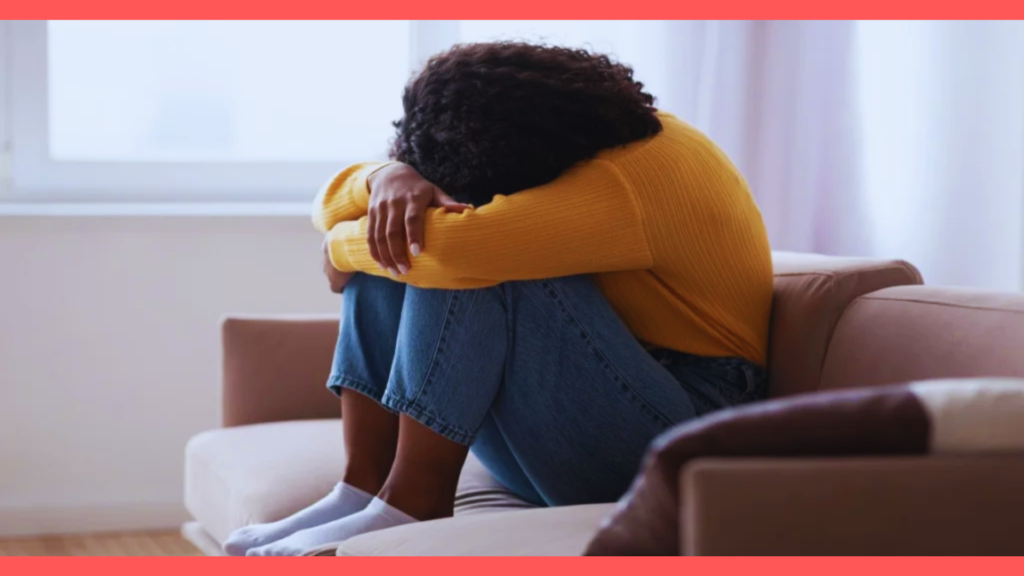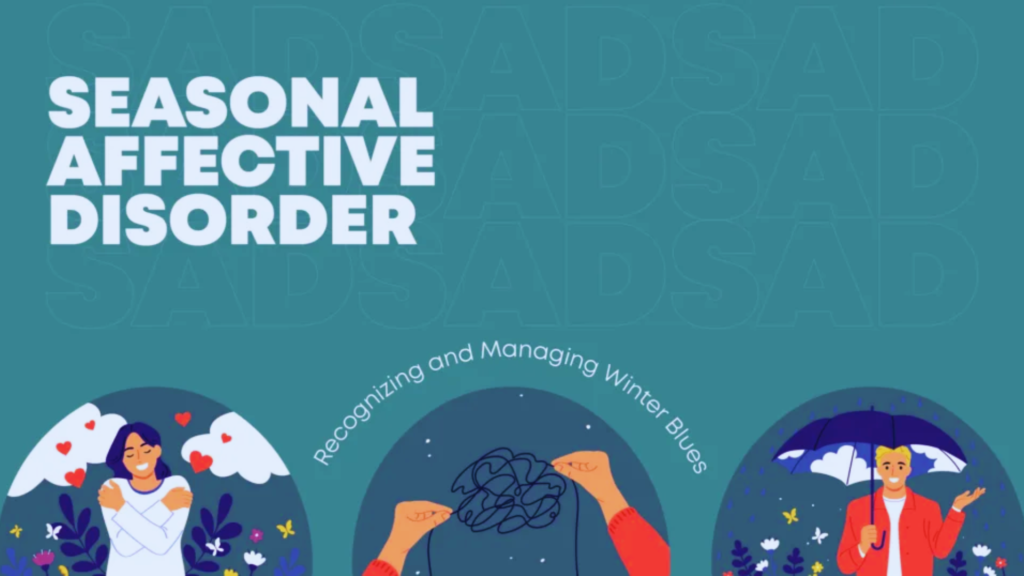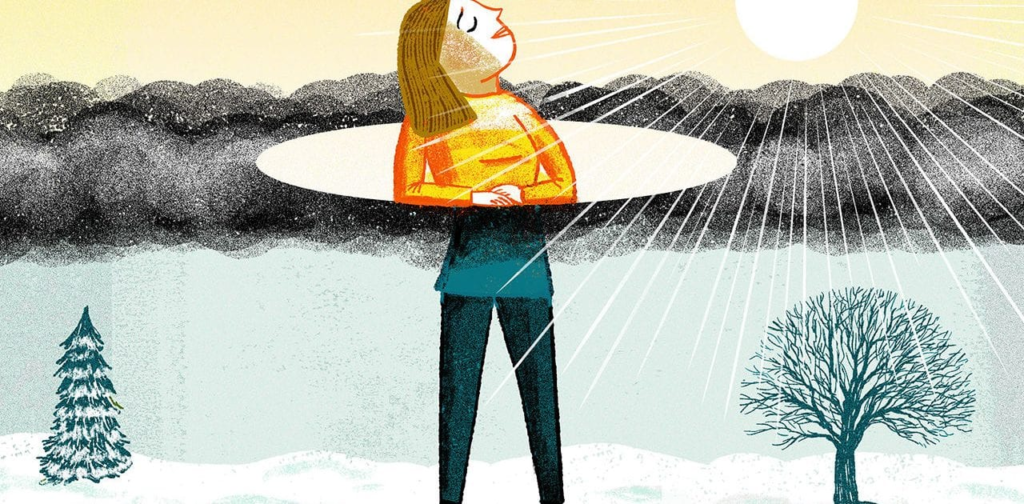
You might notice shifts in your interest in activities, energy levels, and sleep patterns during certain times of the year. If these issues become serious and hamper your daily life, they can cause seasonal affective disorder (SAD). Seasonal affective disorder is a form of depression linked to seasonal changes.
Symptoms usually emerge in the fall, persist through the winter, and tend to fade away in the months of spring or summer. SAD is a mood disorder that causes significant changes in emotions and feelings. This disorder can greatly influence how individuals experience and respond to their emotions. In this article, I will let you know the signs, causes and treatment options of SAD.
What Is Seasonal Affective Disorder?

Seasonal affective disorder (SAD) is a form of depression that occurs with seasonal changes. It typically starts and stops around the same time each year. This condition is also known as seasonal depression or winter depression. For most individuals with SAD, symptoms begin in the fall and persist through the winter, draining energy and causing moodiness.
These symptoms usually improve during the summer and spring months. In rarer cases, SAD can trigger depression in the early summer or spring months, which then eases in the winter or fall months. Each year, SAD may impact around 11 million individuals in the United States, with an additional 25 million experiencing a milder version known as the winter blues.
The shorter days and reduced sunlight are believed to trigger chemical changes in your brain, resulting in depressive symptoms. Treatment options for seasonal affective disorder might include medications, light therapy, and talk therapy.
What Causes Seasonal Affective Disorder?
Scientists aren’t entirely sure what leads to seasonal depression. Reduced sunlight might cause the disorder if you are susceptible to it. Some seasonal affective disorder causes may include:
- Neurotransmitter imbalance: Neurotransmitters in the brain facilitate communication between nerves. One of these neurotransmitters is serotonin, which is essential for feelings of happiness. If you are susceptible to SAD, you might already have lower serotonin activity. Since sunlight helps maintain serotonin levels, the lack of it during winter can worsen the situation, causing serotonin levels to drop further and leading to depression.
- Negative feelings: Individuals with SAD often experience anxiety, stress, and negative feelings about the winter season. Researchers are still trying to determine whether these negative thoughts contribute to or result from seasonal depression.
- Biological clock shift: When sunlight decreases, your internal biological clock changes. This clock plays a key role in regulating your hormones, mood, and sleep. As it shifts, you may find it hard to keep up with your usual daily routine and struggle to adjust to the alterations in daylight length.
- Lack of Vitamin D: Vitamin D also plays a crucial role in boosting serotonin levels. Since sunlight is necessary for your body to produce vitamin D, reduced sun exposure in winter can result in a deficiency of Vitamin D. This can negatively impact your serotonin levels and overall mood.
- Melatonin increase: Melatonin is a hormone that influences your mood and sleep patterns. With less sunlight, some individuals may produce too much melatonin. This leads to feelings of sleepiness and sluggishness during the winter months.
Seasonal Affective Disorder Symptoms

Typically, symptoms of seasonal affective disorder (SAD) emerge in late fall or winter and tend to fade away with the arrival of sunny spring and summer days. Less frequently, some individuals experience the opposite pattern, with symptoms starting in spring or summer. In both scenarios, symptoms might begin mildly but can intensify as the season progresses.
Common signs and symptoms of seasonal affective disorder include:
- Experiencing low energy and a sense of sluggishness
- Feeling down, sad, or listless for most of the day, almost daily
- Craving carbohydrates, overeating, and gaining weight
- Feeling guilty, hopeless, or worthless
- Having trouble concentrating
- Losing interest in activities you once found enjoyable
- Struggling with excessive sleep
- Suicidal thoughts
Winter Seasonal Affective Disorder
Symptoms unique to winter-onset seasonal depression, often referred to as winter depression, can include:
- Sleeping more than usual
- Changes in appetite, particularly cravings for carbohydrate-rich foods
- Gaining weight
- Feeling tired or lacking energy
Spring Seasonal Affective Disorder
Symptoms associated with summer-onset SAD, often known as summer depression, can include:
- Weight loss
- Difficulty sleeping (insomnia)
- Heightened irritability
- Decreased appetite
- Feelings of agitation or anxiety
Seasonal Shifts and Bipolar Disorder
Individuals with bipolar disorder face a higher risk of developing SAD. For some individuals struggling with bipolar disorder, episodes of mania might be associated with certain seasons.
For instance, summer and spring can trigger symptoms of mania or a milder form of mania known as hypomania, along with feelings of irritability, anxiety, and agitation. Conversely, they might experience depressive episodes during the winter and fall months.
Seasonal Affective Disorder Treatments

Treatment options vary based on the severity of your signs of seasonal affective disorder. The approach you receive may also depend on whether you have another form of depression. Your healthcare provider will discuss various treatment options with you. You might require a mix of treatments, which can include:
Light Therapy
Light therapy is recognized as an effective treatment for seasonal affective disorder. Research indicates that about half of those who use a light therapy box experience significant depression symptom relief.
It is important to consult with a healthcare expert who understands light therapy to identify the right device, learn how to set it up properly, and determine the appropriate duration for use. Typically, the lightbox should deliver an exposure of 10,000 lux while minimizing UV light emission.
It is generally advised to utilise the light box for 20 to 30 minutes within the 1st hour after you wake up in the morning. Some light boxes produce white light, while others produce blue light, and there is no proven advantage to either color. If you have a medical condition or take medication that makes your skin or eyes sensitive to light, it’s essential to discuss this with your doctor before using a lightbox.
Physical Activity
Studies have found that exercising for just twenty minutes at least 3 times weekly can be as effective as taking an antidepressant. Staying active helps boost serotonin production and lift your mood. In addition, exercising outdoors in daylight can enhance the benefits of your workout.
Cognitive Behavioral Therapy (CBT)
Cognitive Behavioral Therapy is an effective treatment for both clinical depression and seasonal affective disorder. It teaches individuals how to manage their depressive symptoms or lessen their severity. Discuss with your healthcare provider regarding CBT and how you can find a skilled therapist who specializes in treating anxiety or depression.
Since SAD is linked to seasonal changes, its onset can often be anticipated, allowing individuals to manage their symptoms better. If you have SAD, you can take preventive measures and start implementing strategies before major depression sets in.
Medications
Sometimes, healthcare providers may suggest antidepressants, either on their own or in combination with light therapy. Antidepressants can be an effective treatment option.
Closing Remarks
Seasonal affective disorder is a mood disorder that tends to occur around the same time every year. It most commonly arises in the fall or winter, but it can begin in the spring or summer as well. Symptoms may include feelings of hopelessness and low energy. If you notice changes in your mood that follow a seasonal pattern, be sure to talk to your doctor.
The exact cause of seasonal affective disorder is not well understood, but shorter days and reduced sunlight may play a role. In addition, melatonin, a hormone related to sleep, might also be connected to SAD.
The good news is that there are effective treatments available for SAD. Treatment options include light therapy, medication, cognitive behavioral Therapy, and physical activity.
